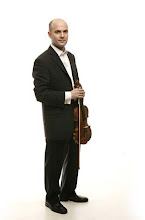Franck was looked down upon by Brahms, who neglected even to glance at a score that Franck sent to him from Paris. Born in Belgium, Franck moved to France; there he became the dominant force in music, accruing a large group of ardent devotees. Unlike Brahms or Beethoven (or Wagner, for that matter), Franck was a saintly man, always kind in manner and speech. To increase the gulf separating him from Brahms and Beethoven, Franck, disinterested in fame and fortune, managed to get married (but it wasn’t a happy marriage). An unsuccesful—though virtuoso—pianist, it wasn’t until Franck began to play the organ at age 30, improvising for hours on the organ of Ste. Clothilde, that he found his vocation. Even then, he was a late bloomer; all of his best known music was written after he was 53 years old.
Franck’s compositional style favors frequent modulations, and, like Liszt’s B minor Sonata, he develops the initial melodic material throughout the piece. His pieces are sensuous, yet spiritual and serene. He promised Wagner’s wife, Cosima, a violin sonata in 1859, but put it off. Finally, the famed Ysaÿe, a fellow Belgian (born in Franck’s hometown), persuaded Franck to write a violin sonata in honor of Ysaÿe’s wedding. The 1886 premiere took place in an art gallery in Brussels. The room was so dark that Ysaÿe was forced to play the sonata largely from memory!


